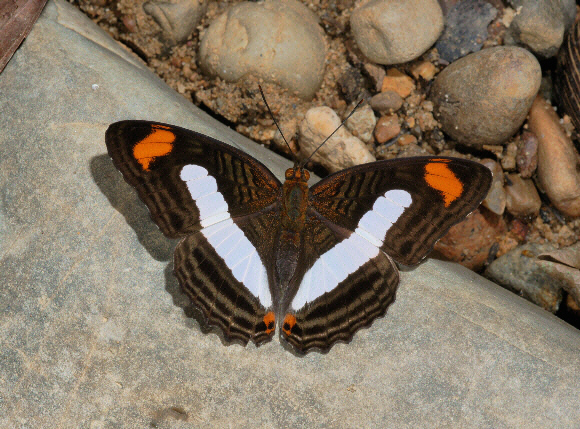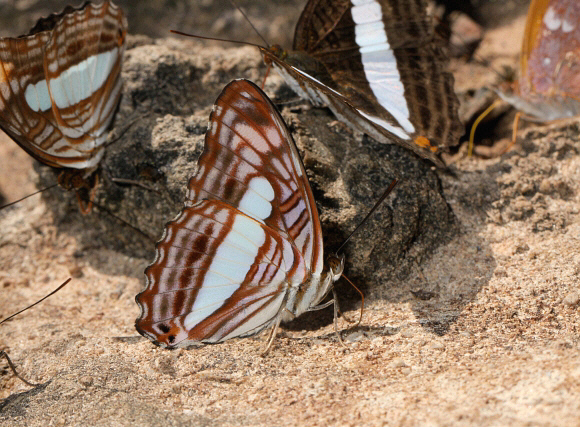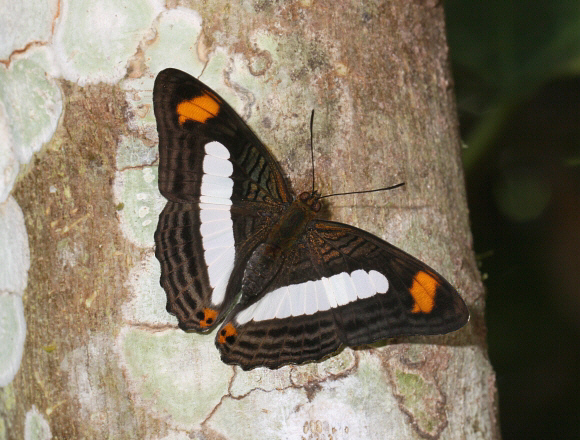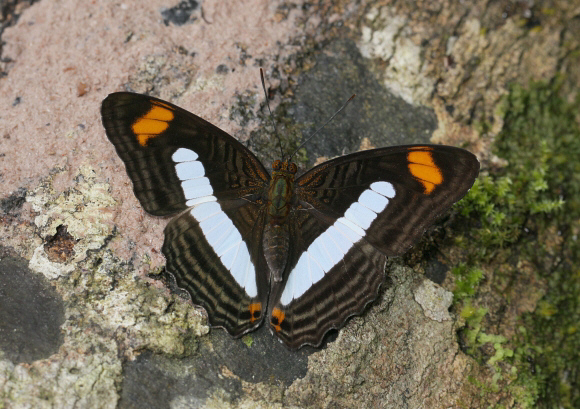
Introduction
Adelpha butterflies are colloquially known as “Sisters”. In terms of appearance they are reminiscent of the White Admirals ( Limenitis ) of Eurasia, and share with them a fondness for flitting gracefully around the lower branches of trees in the dappled sunlight of the forest.
There are 85 known species of Adelpha, all except two of which are confined to Central and South America. The butterflies are characterised by having a distinctive blackish marbled pattern overlaid on a brown ground colour; and by the presence of a broad orange or white band on the forewings. The hindwings of most species have a white median band.
While it is easy to recognise the genus, determining the individual species can sometimes be very difficult – a problem exacerbated by misidentified or mislabelled specimens in certain entomological books. The only reliable identification resource is “The genus Adelpha” by Keith Willmott. Accurate identification requires careful examination of the configuration of orange markings in the subapical area on the forewing. In most cases it is also essential to examine the patterning on the undersides, by which means otherwise similar species can be distinguished.
Adelpha iphiclus is distributed throughout the tropical and sub-tropical regions of Central and South America, from Mexico to Bolivia.

Habitats
This species is found in disturbed areas of deciduous and evergreen forests, including river banks, clearings, glades and orchards, at altitudes from 0-1200m.
Lifecycle
The egg is laid singly on a leaf of Calycophylum, Isertia or Uncaria ( Rubiaceae ). The young larva nibbles away at the tip of a leaf, leaving the midrib projecting. It constructs a chain of frass along the midrib and rests at the end of it. Frass chains appear to act as a deterrent to ants, spiders and parasitoids which find it difficult to walk on them. The fully grown larva is dark brown. It has 2 rows of conspicuous spines along it’s back. Those on the first two segments are enlarged and directed forward, while the third pair are directed backward. The larvae rest openly on the upper surface of old damaged leaves.

Adult behaviour
Males are commonly seen in two’s and three’s perching on foliage in dappled sunlight. They rarely remain long in one place, tending instead to flit nervously from leaf to leaf. They are often found mud-puddling with other Adelpha species, sometimes amidst large aggregations. Both sexes feed at over-ripe fruits of mango, Guazuma and Genipa; and nectar at Vochysia and Paullinia.

